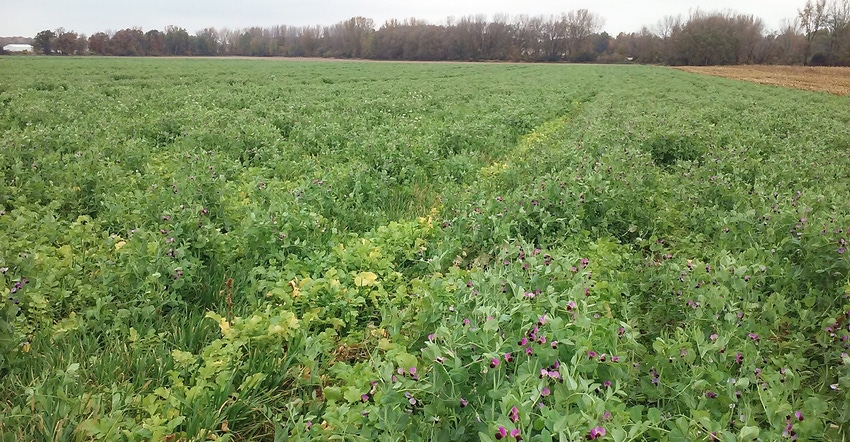December 5, 2019

Healthy soil should be as important to crop farmers as healthy animals are to livestock farmers. That’s not always recognized, but it’s vital to long-term profitability and sustainability. Remember the Dust Bowl?
“To really buy into the system is a major change,” says Josh Odekirk, an area resource conservationist with the Natural Resources Conservation Service for southeast Wisconsin. Odekirk’s territory extends from the Central Sands to the Driftless Area. He is a graduate of University of Wisconsin-Stevens Point and worked as an agency soil conservationist in Jefferson, Washington, Ozaukee and Dodge counties before being named the area conservationist. He grew up on a dairy farm near Campbellsport in Fond du Lac County.
“The typical dairy rotation that we grew up with is not soil health-friendly,” he notes. “Since the soil is packed with beneficial micro and macro invertebrates, we want to start treating soil like the living thing that it is. Once farmers have that understanding, they tend to treat their soil very differently.”
Sustainable practices
Odekirk and all the county NRCS specialists work with farmers to educate them about changes that could be made to improve the health of their soil. Practices such as no-till or minimum-till and cover crops have become part of farming terminology, and more farmers are buying into them. Odekirk estimates that “at least 50% of farmers recognize that farming needs to change to keep up with today’s challenges from things like the markets and climate. There are some exciting producers who have really embraced [soil health practices], and some others who are more resistant to change.”
He figures Wisconsin is “a little behind some surrounding states with implementing soil health systems, but we are learning how to adapt systems to our weather and diverse soil types” — whether on sandy soils, heavy clay or nice loam.
“Soil health outreach is a huge part of our focus right now,” Odekirk says. The agency has soil health kits to demonstrate differences between healthy, crumbly soil that allows rainwater and nutrients to penetrate versus compacted soil that instead promotes runoff and fosters weed growth. A rainfall simulation trailer shows the deep penetration of rainwater in the healthy soils and the runoff that occurs instead on unhealthy soils.
“It’s an eye-opening demonstration,” Odekirk says. “I’ve seen a lot of lightbulbs go off with that.”
Healthy soil principles
Odekirk outlines four principles for healthy soil:
1. Tillage. Where in the rotation can you reduce disturbance of the soil?
2. Diversity of plantings. You can increase the number of microbes you have to, in turn, promote soil health.
3. Living roots. Keep living roots as much as possible. Plant cover crops or change the rotation to maintain live cover.
4. Cover. Keep the soil covered as much as possible. This protects it from compacting rain, adds organic matter, and promotes the growth of earthworms that aerate the soil and of other beneficial organisms.
Farmers wanting to join the change or improve on their practices should evaluate all or any of these principles in their operation, Odekirk says.
For farmers newer to soil health practices, he recommends starting small and “somehow reduce tillage.” Also consider a lower-risk crop such as rye after corn silage. Many more experienced farmers have already formed support groups to meet, share ideas and come up with their own ways to improve through producer-led watershed groups.
“Peer pressure does more than the government can ever do,” Odekirk acknowledges.
NRCS offers cost-sharing for various practices through its Environmental Quality Incentives Program, the Conservation Stewardship Program and conservation technical assistance. Local county offices have full information on the programs that can reach beyond no-till and cover crops to grazing practices, irrigation management, manure management and even pollinator habitat.
“We’re all trained on the quick speech on what is available,” Odekirk says, laughing; then, more seriously, he adds, “I just think there is nothing more impactful on the resources around us than the health of the soil.”
Buchholz writes from Fond du Lac, Wis.
About the Author(s)
You May Also Like




